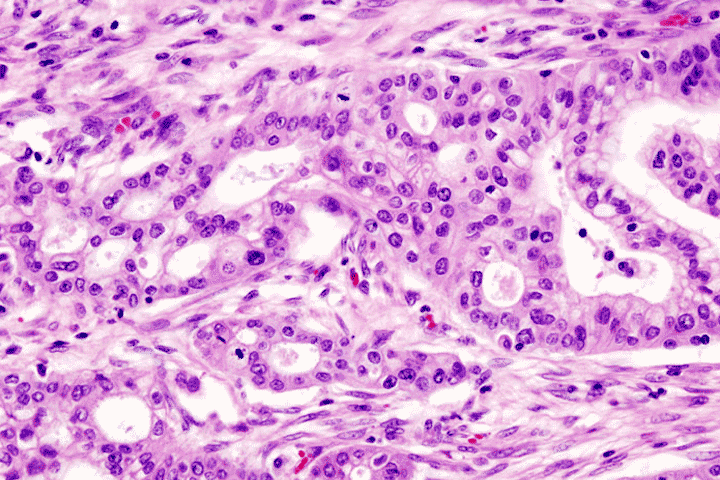A New Chemotherapy and Radiation Regimen to Shrink Tumors Before Surgery

Can a new combination of chemotherapy and radiation before surgery make complete removal of pancreatic tumors easier?
A clinical trial is evaluating a chemoradiation strategy to shrink pancreatic cancer tumors to make surgery less complex. Researchers want to see how the tumor responds to this treatment in patients with cancer that may or may not qualify for surgical removal.
Combination Chemotherapy First
Participants start treatment with the drug combination FOLFOX: FOL (leucovorin calcium, or folinic acid), F (fluorouracil, or 5-FU), and OX (oxaliplatin). 5-FU is an antimetabolite that disrupts a specific part of the cell replication cycle. Because it targets all cells, not just cancer cells, it causes uncomfortable but manageable side effects. Leucovorin, which is derived from folic acid, enhances the effects of 5-FU. Oxaliplatin is a platinum compound that disrupts DNA replication and kills cancer cells.
Standard Chemoradiation Next
Once FOLFOX treatment is complete, the standard treatment of radiation and gemcitabine begins. Radiation damages the DNA of cancer cells (and normal cells as well). Gemcitabine is converted into two metabolites that cause cell death. One reduces the number of proteins available to make DNA; the other shortens the DNA strands so that they are nonfunctional. When this part of the regimen is complete, participants will be evaluated for surgery.
This trial is for patients who have not received any other treatment for pancreatic cancer. All participants receive the treatment being studied.
We encourage you to consult your physicians for clinical trials that may be right for you. The website ClinicalTrials.gov provides more details about this trial as well as many others. You can visit the Let’s Win Trial Finder for a listing of all active pancreatic cancer clinical trials.
The status of this trial is unknown. Read more about similar trials in the Research topic Radiation.




